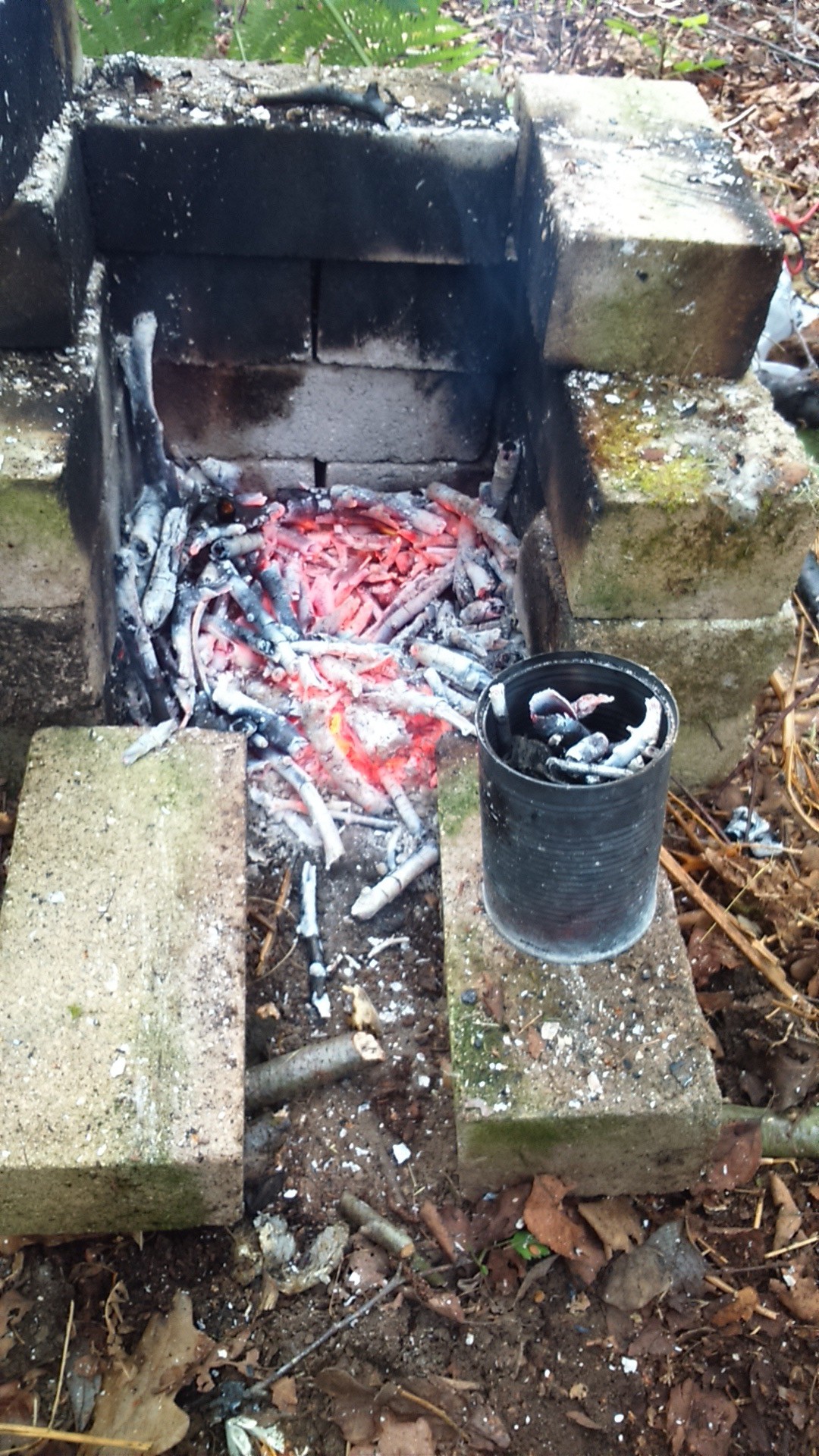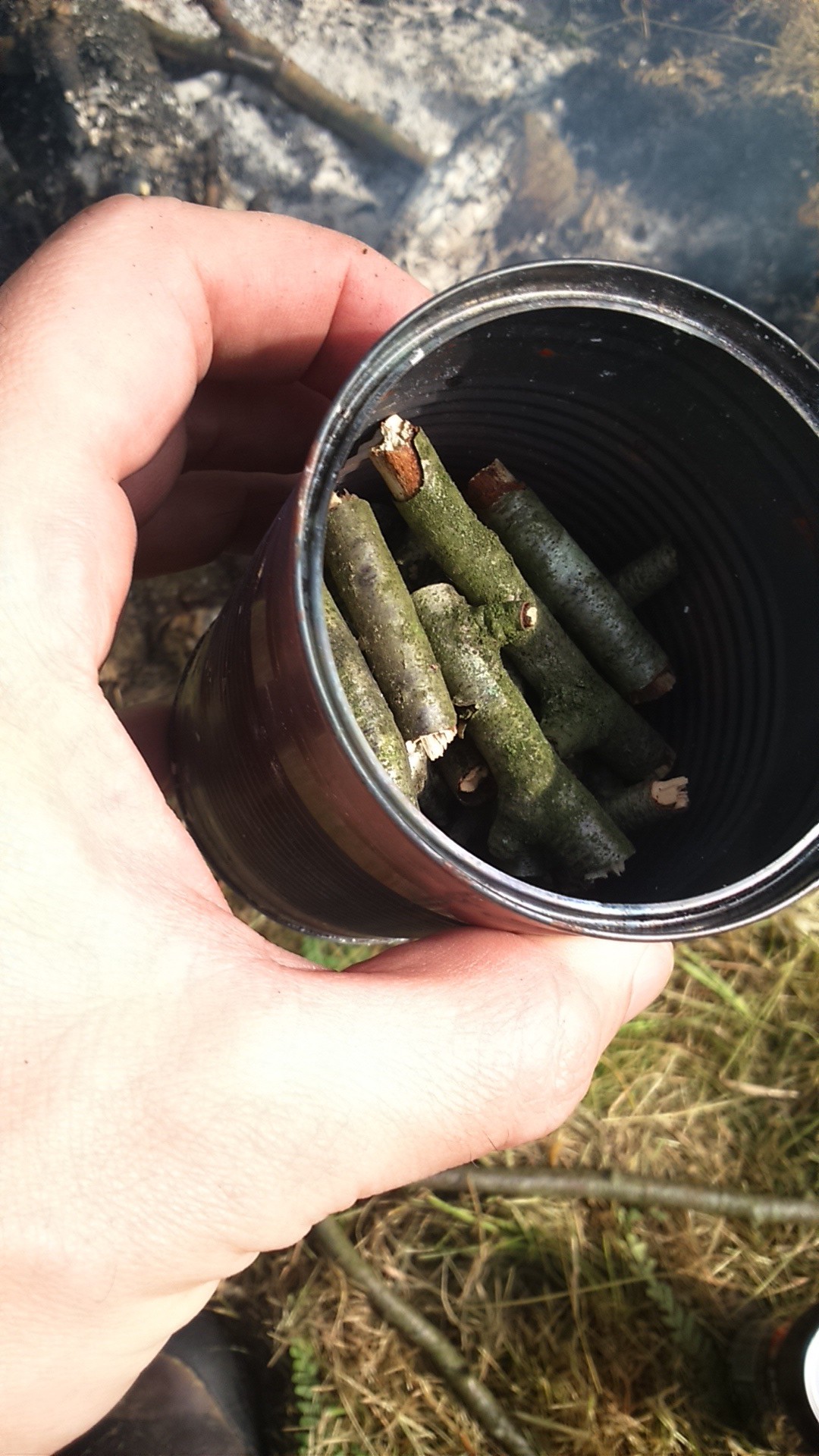 The filament of the bulb in the project photo is made from electrically conductive charcoal. This log entry describes my experience of making it.
The filament of the bulb in the project photo is made from electrically conductive charcoal. This log entry describes my experience of making it.
In a small wood fired furnace I heated some birch twigs up to temperatures that I believe we're somewhere around 700 degrees C in a container that hindered the entrance of air. Gently pushing ohmmeter probes a few mm apart on the resulting charcoal gave readings of a few hundred to a few thousand ohms. I later noticed that many of the pieces of charcoal left among the ashes of the fire were also conductive. The best pieces that I found (which I believe came from some pine sticks) gave a resistance measurement of about 5 ohms when ohmmeter probes were pressed against either side of lumps of charcoal measuring 2cm across. These lumps of pine charcoal were noticeably less dense than the birch twig charcoal. It would be useful to carry out experiments (or find existing experimental results) on making conductive charcoal from a range of different woods at a range of different temperatures.
 will.stevens
will.stevens
Discussions
Become a Hackaday.io Member
Create an account to leave a comment. Already have an account? Log In.